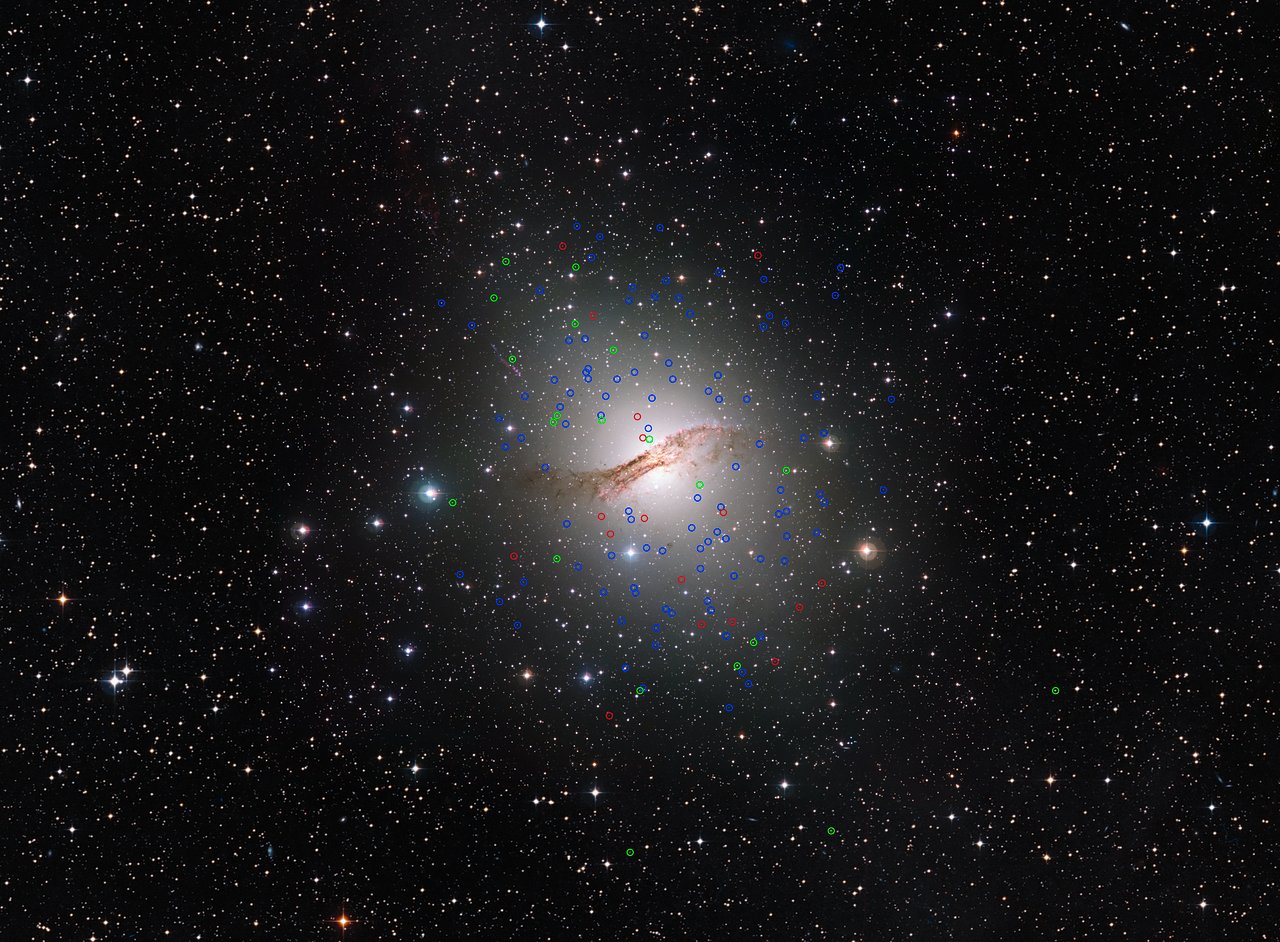
Centaurus A, also known as NGC 5128, is a galaxy that has captivated astronomers and space enthusiasts alike. Situated in the constellation of Centaurus, this celestial beauty is one of the closest radio galaxies to Earth, making it a popular subject of study.
With its distinctive appearance and fascinating properties, Centaurus A has become a source of intrigue and wonder. In this article, we will delve into 19 captivating facts about this galactic marvel, shedding light on its origin, structure, and unique features.
So, buckle up and prepare for a cosmic journey as we explore the remarkable world of Centaurus A.
Key Takeaways:
- Centaurus A (NGC 5128) is a giant galaxy with a supermassive black hole, dusty disk, and powerful jets, making it a fascinating subject for astronomers and astrophysicists.
- Its close proximity to Earth, evidence of galactic collisions, and contributions to dark matter research make Centaurus A a captivating and enigmatic galaxy that continues to reveal intriguing facts about the universe.
The Most Studied Galaxy
Centaurus A, also known as NGC 5128, is one of the most intriguing and extensively studied galaxies in the universe. Its unique features and proximity to Earth have made it a favorite subject for astronomers and astrophysicists.
An Active Galactic Nucleus
Centaurus A exhibits an active galactic nucleus, which means that it has an extremely bright core emitting high-energy radiation. This makes it a fascinating object of study in the field of active galactic nuclei.
Hubble Space Telescope Spectacular Image
The Hubble Space Telescope captured a breathtakingly detailed image of Centaurus A, revealing its complex and intricate structure. The image showcases its dusty disk, prominent jet, and the stunning interplay of light and shadows within the galaxy.
Distance from Earth
Centaurus A is located approximately 13 million light-years away from Earth, making it one of the closest radio galaxies to us. Its relatively close proximity allows for detailed observations and studies.
A Giant Elliptical Galaxy
NGC 5128 is classified as a giant elliptical galaxy, making it unique among neighboring galaxies. Its elliptical shape and prominent dust lanes set it apart from the spiral galaxies we are more familiar with.
Size of Centaurus A
Centaurus A is an enormous galaxy, spanning about 60,000 light-years across. This makes it roughly five times larger than our Milky Way galaxy, highlighting its immense scale and significance.
Evidence of a Galactic Collision
Scientists have discovered that Centaurus A shows clear signs of a past galactic collision. The presence of a dusty disk and disturbed morphology suggest that a smaller spiral galaxy merged with the elliptical galaxy millions of years ago.
A Supermassive Black Hole
At the center of Centaurus A lies a supermassive black hole with a mass equivalent to approximately 55 million times that of our Sun. This massive black hole is actively devouring surrounding matter, giving rise to the bright core and jet emissions.
Interactions with Dwarf Galaxies
Centaurus A has interacted with several dwarf galaxies in the past, resulting in the formation of unique features within its structure. These interactions have led to the creation of stars, clusters, and other interesting phenomena.
Radio Emissions and Relativistic Jets
Centaurus A is known for its powerful radio emissions and relativistic jets that extend many thousands of light-years into space. These jets are believed to be powered by the supermassive black hole at the galaxy’s core.
Dusty Disk Surrounding the Nucleus
The central region of Centaurus A features a prominent dusty disk surrounding the active galactic nucleus. This disk is thought to be the result of the collision and subsequent merger of two galaxies.
Infrared Emission and Star Formation
Centaurus A exhibits strong infrared emission, indicating the presence of dust and gas that fuel ongoing star formation activities. This makes it an excellent laboratory for studying the processes involved in galaxy evolution.
A Host to Globular Clusters
Centaurus A is home to a large number of globular clusters – tightly bound groups of stars that orbit around the galaxy. These clusters provide valuable insights into the formation and evolution of galaxies and their stellar populations.
Variability in Jet Emissions
The relativistic jets emanating from Centaurus A’s core show significant variability in their emissions. This variability provides valuable clues about the processes occurring near the supermassive black hole and the physics of jet formation.
A Source of Cosmic Rays
Centaurus A is considered a possible source of cosmic rays – high-energy particles that travel through space at near-light speeds. Understanding the origin and nature of cosmic rays is an ongoing area of research in astrophysics.
Multi-Wavelength Observations
Scientists study Centaurus A across a wide range of wavelengths, including radio, infrared, optical, ultraviolet, and X-ray. Combining data from different wavelengths helps to build a comprehensive picture of the galaxy’s properties and phenomena.
X-ray Emission and Hot Gas
Centaurus A displays intense X-ray emission, which is attributed to the presence of hot gas in the galaxy’s vicinity. Studying this hot gas provides insights into the galaxy’s interstellar medium and the processes occurring within it.
Contributions to Dark Matter Research
Centaurus A has contributed significantly to the understanding of dark matter, an elusive substance that makes up a significant portion of the universe’s mass. Observations of its mass distribution and dynamics have provided valuable data for dark matter studies.
A Source of Optical and Gamma-Ray Flares
Centaurus A occasionally exhibits optical and gamma-ray flares, which are believed to be caused by the acceleration of charged particles in the vicinity of the supermassive black hole. These flares provide opportunities for studying high-energy astrophysical processes.
In conclusion, Centaurus A (NGC 5128) is a captivating and enigmatic galaxy that has captured the attention of astronomers worldwide. Its unique features, including an active galactic nucleus, evidence of galactic collisions, and relativistic jets, make it a treasure trove for scientific research. With ongoing studies and advancements in technology, we continue to uncover fascinating facts about this remarkable celestial object.
Conclusion
In conclusion, Centaurus A (NGC 5128) is an incredibly fascinating galaxy that continues to capture the attention of astronomers and space enthusiasts around the world. Its unique characteristics, such as its peculiar radio emission, massive black hole, and dust lane, make it a subject of extensive research and study.
Centaurus A is not only visually captivating but also holds important scientific value. Its study enables us to better understand the formation and evolution of galaxies, as well as the role of black holes in shaping the universe.
As technology advances and our knowledge of the universe expands, we can expect to uncover even more captivating facts about Centaurus A and further deepen our understanding of this extraordinary cosmic wonder.
FAQs
1. What is Centaurus A?
Centaurus A, also known as NGC 5128, is a peculiar galaxy located in the constellation of Centaurus. It is one of the closest and most studied radio galaxies.
2. How far away is Centaurus A?
Centaurus A is located approximately 11 million light-years away from Earth.
3. Why is Centaurus A called a peculiar galaxy?
Centaurus A is considered peculiar due to its unique features, such as its prominent dust lane and radio emission. It exhibits characteristics that distinguish it from other galaxies.
4. Does Centaurus A have a black hole?
Yes, Centaurus A is known to host a supermassive black hole at its center. This black hole has a mass equivalent to about 55 million times that of our Sun.
5. What is the significance of studying Centaurus A?
Studying Centaurus A provides valuable insights into the formation and evolution of galaxies, as well as the role of black holes in shaping the universe. It helps expand our knowledge of the cosmos and opens avenues for further research.
6. Can Centaurus A be seen with the naked eye?
No, Centaurus A cannot be seen with the naked eye. It requires a telescope to observe due to its distance from Earth.
7. Are there any ongoing missions or projects focused on Centaurus A?
Yes, various missions and projects, such as the Atacama Large Millimeter/submillimeter Array (ALMA) and the Chandra X-ray Observatory, have dedicated efforts to observing and studying Centaurus A.
8. How was Centaurus A discovered?
Centaurus A was first discovered by Scottish astronomer James Dunlop in 1826. Since then, it has become a subject of intense investigation and scrutiny by scientists.
Centaurus A captivates with its extraordinary features, from its supermassive black hole to its galactic collision history. Dive deeper into the mysteries of the universe by exploring elliptical galaxies, marveling at the wonders of astronomy, and unraveling the secrets of black holes. Each topic offers a unique perspective on the cosmos, promising to expand your knowledge and ignite your curiosity. Embark on a journey through the vastness of space and discover the awe-inspiring phenomena that shape our understanding of the universe.
Was this page helpful?
Our commitment to delivering trustworthy and engaging content is at the heart of what we do. Each fact on our site is contributed by real users like you, bringing a wealth of diverse insights and information. To ensure the highest standards of accuracy and reliability, our dedicated editors meticulously review each submission. This process guarantees that the facts we share are not only fascinating but also credible. Trust in our commitment to quality and authenticity as you explore and learn with us.


